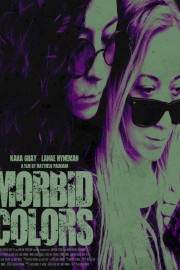Morbid Colors
“Morbid Colors” moves not at a head-long pace, but a meandering one. What keeps us from losing interest entirely is the bond between Myca (Kara Gray) and Devin (Lanae Hyneman). They are foster sisters to a drug addict named Leni (Angela Steele), and even beyond the struggles foster children typically have in movies, their lives are complicated. Now, as young women, Devin has stayed with Leni, trying to make it as a musician, while Myca is coming home after four months away at a facility. She’s eager to get out of there as soon as possible, though not for the reasons we think. She’s trying to collect some money she’s owed from a drug dealer, but when that goes sideways, we discover something about Myca that causes her and Devin to get out of town, and hopefully, get some answers from Gloria (Cindy Maples), a woman from Myca’s past.
The empathy Devin has for Myca, the desire to help her as she’s trying to control her addiction, is what drives “Morbid Colors,” written and directed by Matthew Packman, who keeps their relationship (wisely) at the center of the film. This is a film about two foster kids who, as they grew into adults, went in opposite directions when it came to trying to control the issues that arose from their situation. For Devin, it was music; for Myca, it was more self-destructive, something that she has difficulty controlling, and for a while, it feels as though Devin might be able to help her with that. But their luck seems to just go from bad to worse, and there’s only so much that Devin can do, and only so much help Myca will accept. The ending of “Morbid Colors” has both women on their own paths, but at peace with where those will lead both themselves, and the other.
I’m side-stepping the genre elements of “Morbid Colors” because that is simply the window dressing for what the film is really about, which is the struggle with addiction, the love of two sisters for one another, and how pain can bring forth inspiration. That’s not to say I didn’t find the genre aspect of the film compelling- if anything, it adds to each of these elements- but it’s also a familiar use of the central metaphor, which we’ve seen many times before. The film is more driven by Devin and Myca’s struggles and bond than the horror elements Packman has put around them, and that’s the way it should be. If I had a complaint about the film, it’s that the visual pallet, though in lock-step with the tone of the story, kind of drags the pacing of the film down because it makes what we are witnessing very monotone; there’s not a lot of change-of-pace in “Morbid Colors,” and it almost wallows, at times, in its own pain. What it does well, however, it succeeds quite well, and that’s what we’re left thinking about when the credits begin to roll.










